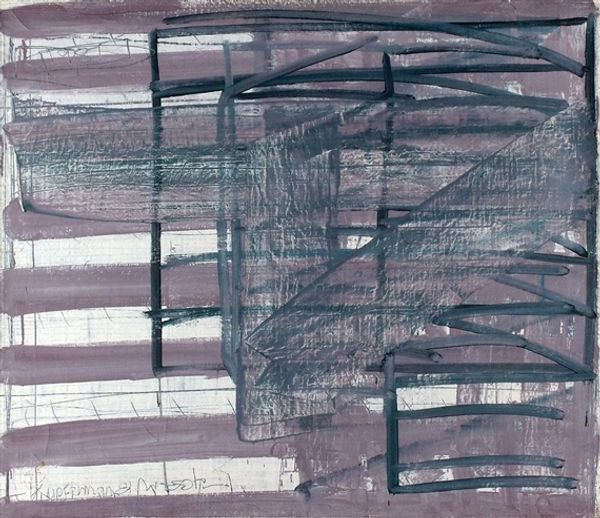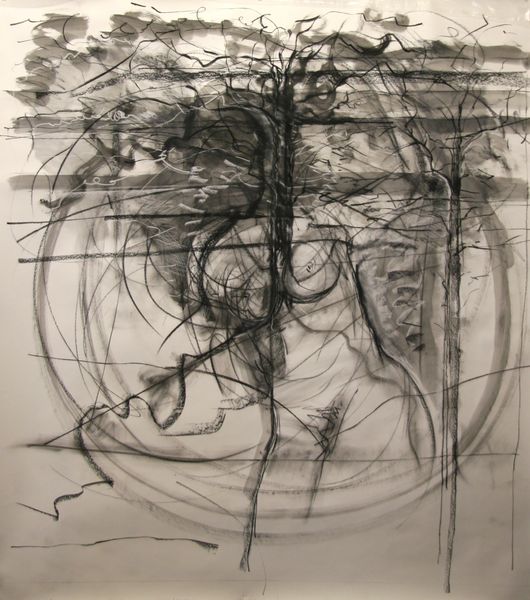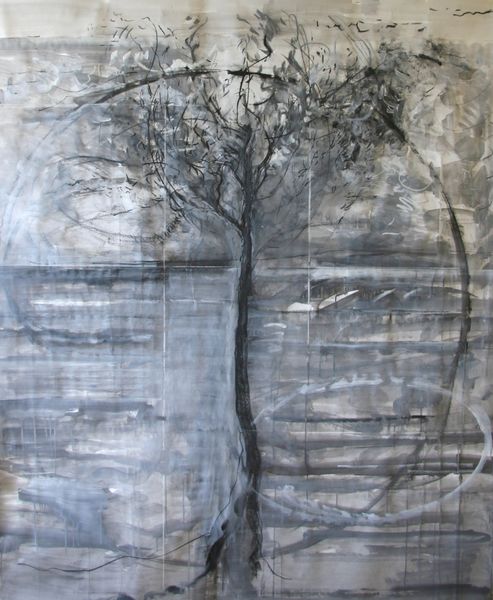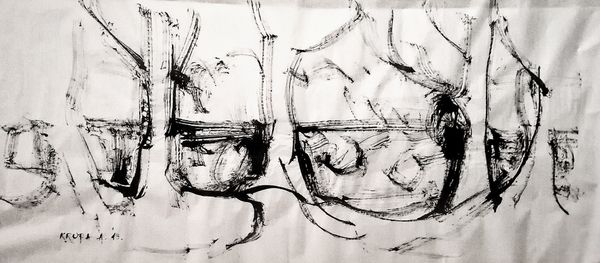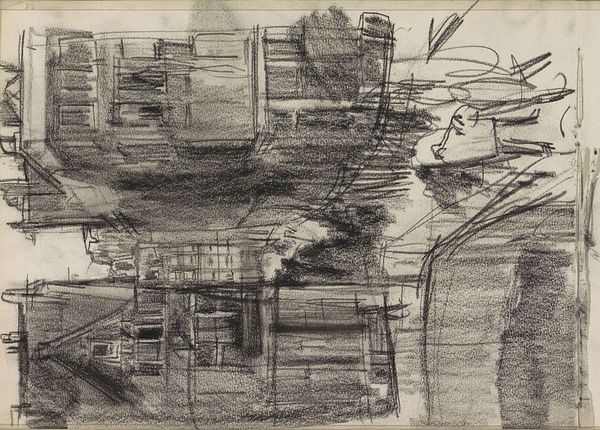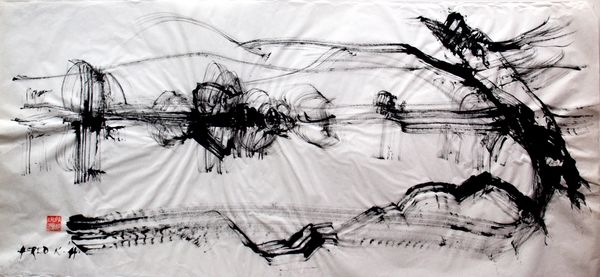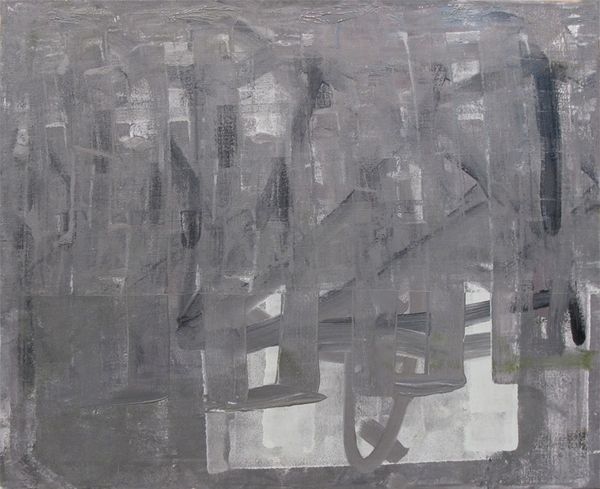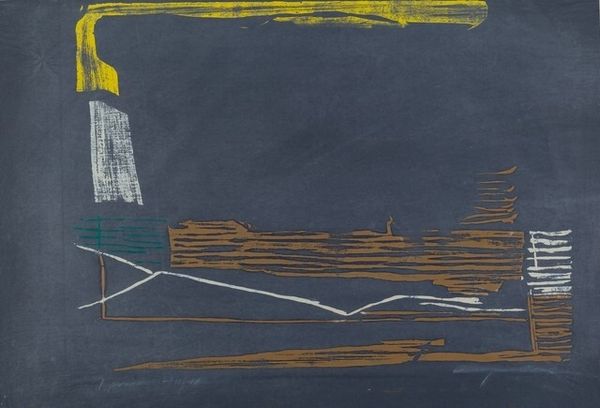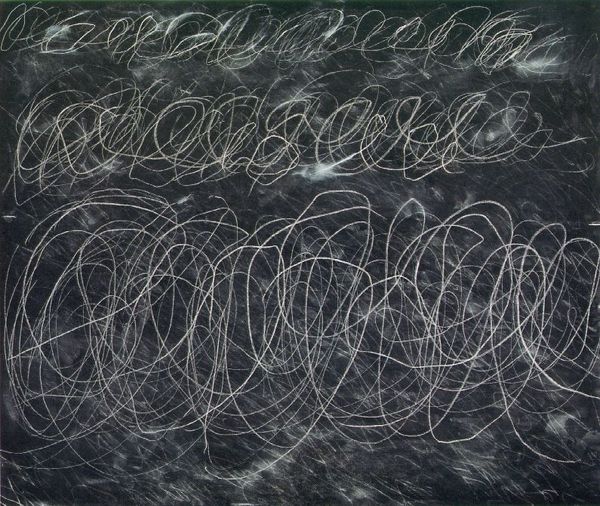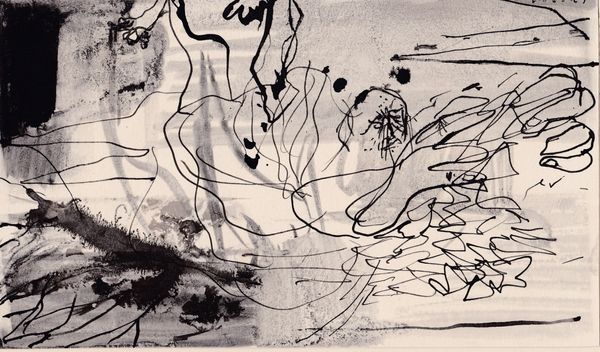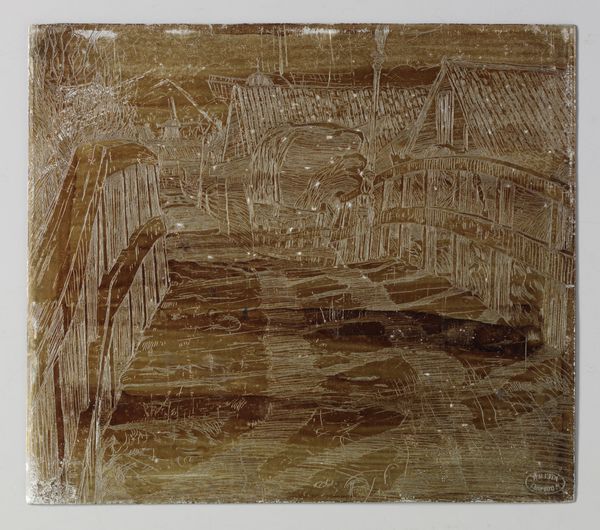
drawing, pen
#
drawing
#
abstract expressionism
#
landscape
#
pen
#
cityscape
#
modernism
Copyright: Creative Commons NonCommercial
Curator: Right, let’s dive into this captivating piece by Alfred Freddy Krupa, created in 2016. It's entitled "Grated ink in situ: The old merchant house at Kupa river in Karlovac." The artist used pen to achieve this cityscape, rendering a historical location with modern sensibilities. Editor: Immediately, it gives me this feeling of looking at a ghost city through a fever dream. The frenetic, almost scratchy lines… it's like trying to recall a memory that's just out of reach. Curator: Interesting take. Krupa’s work often plays with memory and place. Karlovac itself has a layered history, being a strategic military outpost in the Habsburg Empire before becoming a trading hub. This particular merchant house by the Kupa River probably saw centuries of commerce and societal shifts. The "grated ink" technique evokes, I think, not just a visual texture, but a feeling of history being eroded or revealed through time. Editor: Exactly! The materials, the frantic line-work – it feels unstable. Not in a bad way, but like it might dissolve at any second back into the inky blackness. Also, that inky backdrop pushes it into a twilight space, a nightscape punctuated by memory. Curator: We can certainly interpret the use of dark space as symbolic. Consider that modernism, to which this piece alludes, challenged conventional representation. It asks the viewer to actively participate in constructing meaning, particularly around representation and the built environment. Krupa, though his technique appears rapid, is consciously building a commentary around time. Editor: For me, I connect to a personal symbolism here, not just the broad strokes of the history it captures. It is reminiscent of lost memories, trying to reassemble pieces. I guess it reflects a kind of inner chaos, which maybe makes it even more emotionally striking for a viewer who has a hard time remembering clear pictures of the past. It hits at this primal level of trying to hold onto something fading. Curator: It’s always valuable to note that interplay between institutional and individual interpretations of art. Thinking through what it tells us about our social past but connecting to feelings we all share now about memory and loss and connection to places, both in terms of geographical position, but also psychological position. Editor: So much there, yeah. Ultimately, its effect is about seeing these very public facing historical structures in this sort of ethereal context, that speaks volumes. Curator: A valuable observation, to see history presented as simultaneously monumental and fleeting. Thank you.
Comments
No comments
Be the first to comment and join the conversation on the ultimate creative platform.
